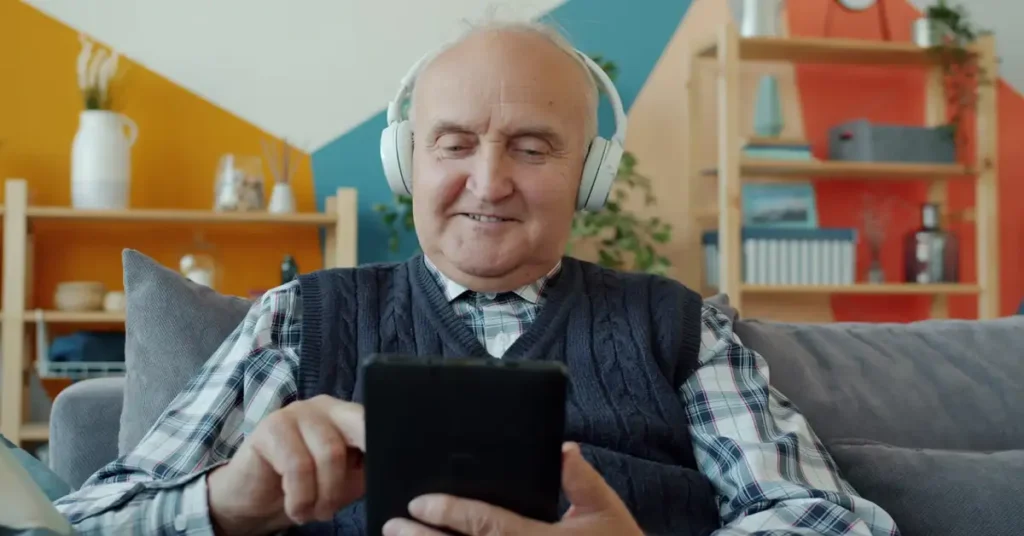Many seniors face loneliness, anxiety, or physical limitations that affect their sense of purpose. In recent years, creative therapies have become a heartwarming way to help older adults reconnect with joy, expression, and self-worth.
Through art, dance, and storytelling, seniors are finding new ways to heal and stay connected to the world around them. Professional caregivers and home care providers are now recognizing these therapies as powerful tools that improve mental and emotional well-being.
The Need for Creative Therapy in the First Place
In many places across the US, the population is aging rapidly. Take Philadelphia as an example. At present, there are over 300,000 residents aged 60 or older in Philadelphia. That means that there’s a growing demand for senior care facilities in such places as well.
The need for creative therapy in senior care stems from the emotional, cognitive, and social challenges many older adults face as they age. Creative therapies offer seniors meaningful ways to express themselves, stimulate their minds, and reconnect with joyful experiences.
Any top senior care agency in Philadelphia or any other place with an aging population is already aware of this. Hence, these agencies are already incorporating creative therapy for their seniors. Art, dance, and storytelling, in particular, are avenues that senior care providers are regularly exploring.
The Emotional Benefits of Art Therapy
According to CareChoice, personalized care is vital for seniors. In many cases, such personalized care includes various creative approaches. Art therapy is one of the most popular choices when it comes to such creative therapies.
Art therapy is more than painting on a canvas or shaping clay. It is a pathway for seniors to express feelings that words sometimes cannot capture. Many older adults struggle with isolation or memory loss, and art becomes a way for them to communicate their emotions.
A meta-analysis of 39 controlled studies shows that group arts interventions significantly reduced symptoms of depression and anxiety in seniors. The effects were comparable to established treatments like medication or talk therapy.
Senior care that incorporates creative art sessions often notices remarkable transformations. Residents who were once quiet or withdrawn start engaging more openly, expressing themselves through colors and shapes that reflect their inner worlds.
For seniors living at home, professional caregivers can encourage simple art activities that nurture the soul. These moments of creativity help reduce stress and promote relaxation. Art therapy gives seniors a renewed sense of identity, proving that creativity has no age limit.
The Rhythmic Healing of Dance Therapy
Dance therapy is another form of creative healing that brings joy and vitality to senior care. Research published in 2023 noted that dance therapy can stimulate neuroplasticity by engaging multiple sensory, motor, and emotional systems simultaneously.
Movement, even in its simplest form, helps maintain balance, flexibility, and strength. More importantly, it connects the body to emotion. Dancing to music from the past often awakens memories and brings smiles to faces that may have forgotten how to smile.
Dance helps release tension and fosters a sense of belonging. When professional caregivers encourage seniors to move to music, they are helping them reclaim a sense of joy that aging sometimes hides.
In home care settings, dance therapy can be tailored to fit the individual’s physical abilities. A few minutes of daily movement or rhythmic tapping can lift the spirit and improve circulation. The combination of music and motion gives seniors a natural energy boost and keeps the heart and mind active.
The Power of Storytelling in Healing and Connection
Storytelling is an age-old tradition that gives voice to memories, experiences, and dreams. For seniors, it is a way to look back with pride, humor, or reflection.
Digital storytelling (DST) for older adults and people with dementia found that across 14 studies, older adults reported increased self-efficacy and reduced depressive symptoms. Sharing stories can ease loneliness and strengthen connections with family, caregivers, and peers.
Such storytelling sessions help build community and mutual respect. They also provide cognitive stimulation, which is essential for keeping the mind sharp. Listening to and telling stories engages memory, imagination, and emotion all at once. It is therapeutic, especially for seniors facing dementia or depression.
In home care environments, professional caregivers can encourage seniors to share memories during daily routines. Asking about childhood, travels, or family traditions can open a beautiful flow of conversation. This kind of interaction builds trust and comfort between caregivers and seniors.
FAQs
What are some creative activities for elderly people?
Elderly people can enjoy painting, storytelling, dancing, music, gardening, and crafting. These activities help them stay mentally active and socially engaged. Creative hobbies also reduce stress and loneliness. They promote emotional expression and give seniors a sense of purpose, helping improve their overall mood and well-being.
What kind of creative therapy is best for the elderly?
The best creative therapy depends on each person’s interests and abilities. Music therapy can calm the mind and improve memory. Dance therapy supports physical movement and coordination. Storytelling helps recall memories and build connections. Each type supports emotional and mental health differently.
How can art therapy help the elderly?
Art therapy helps seniors express feelings they might struggle to put into words. It reduces anxiety, depression, and stress. The process improves focus and hand-eye coordination. Creating art stimulates the brain, helping maintain cognitive function. It also offers comfort and joy, promoting emotional healing and better mental well-being.
Creative therapies are a beautiful reminder that healing can come from within. Art, dance, and storytelling open doors for seniors to express themselves, reconnect with their memories, and rediscover joy.
Through the compassionate guidance of professional caregivers, seniors can explore creativity at their own pace, feeling supported every step of the way. After all, creativity, at any age, remains a gentle but powerful path toward healing and happiness.



